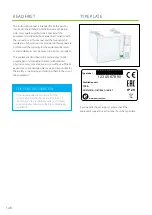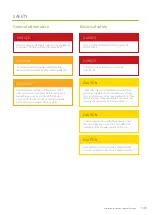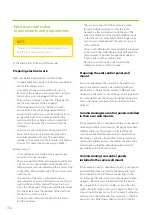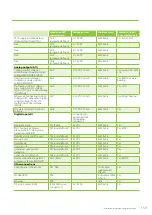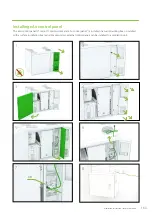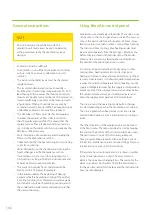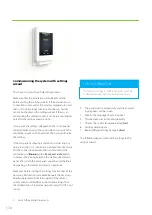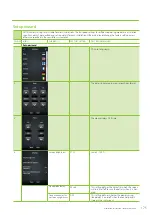
162
All Enervent ventilation units must be drained. When
air cools down (condenses), condense water forms. For
example in winter time when humid inside air meets cold
heat recovery wheel, or when warm outside air meets the
cooling coil in the ventilation unit (if applicable).
Draining condensate water
•
The condensate water should be led in a falling, at
least Ø15 mm pipe, through a water trap to a floor
drain or such.
•
The pipe must at all times lie lower than the conden-
sate water drip pan / condensate water connection of
the ventilation unit.
•
There must not be any longer horizontal sections on
the pipe.
•
The condensation drain pipe must be insulated if
mounted in spaces where freezing can occur.
•
Only one water lock is allowed for each condensate
water drain.
•
If the unit is equipped with more than one condense
water drains, each one must have a water lock of its
own.
•
There is underpressure in the ventilation unit. We
recommend a height difference of (A) 75 mm, or at
least the underpressure divided with 10 in millimeters
(i.e. 500 Pa under pressure -> 50 mm), between the
unit drain and the water lock drain.
The condense water drain must not be directly
connected to a sewer pipe.
CAUTION
•
We recommend that the height of backwater in the
water lock (B) is 50 mm, or at least the underpressure
divided with 20 in millimeters (i.e. 500 Pa under
pressure -> 25 mm height of backwater). The above
also applies to duct coils for cooling mounted in the
outside air duct or extract air duct.
•
There are over pressure inside duct coils mounted in
the supply air duct. We recommend the height diffe-
rence (A) between the duct coil drain and the water
lock drain is 25 mm. The water lock height of backwa-
ter (B) must be 75 mm, or at least the over pressure
divided with 10 in millimeters (i.e. 500 Pa under
pressure -> 50 mm).
•
The water lock must be filled with water before star-
ting up the unit. The water lock might dry up if water
is not accumulated in it. If this happens, air might
get into the pipe and hinder water from entering the
water lock, which might result in an irritating ”bubb-
ling” sound.
•
The functionality of the water lock must be checked
every year before the heating season and also in the
spring if the ventilation unit is equipped with cooling.
A
B
Summary of Contents for Salla eAir
Page 20: ...20 9 13 15 11 10 14 Lisävaruste 1 2 min 12 ...
Page 46: ...46 ...
Page 49: ...49 Installationsanvisningar för yrkesfolk ...
Page 50: ...50 Salla eAir Installationsanvisningar för ventilationsaggregat Svenska ...
Page 68: ...68 9 13 15 11 10 14 Extra tillbehör 1 2 min 12 ...
Page 94: ...94 ...
Page 97: ...97 Installasjonsinstrukser for fagfolk ...
Page 98: ...98 Installeringsinstruksjoner for ventilasjonsenheten Norsk Salla eAir ...
Page 116: ...116 9 13 15 11 10 14 Ekstrautstyr 1 2 min 12 ...
Page 142: ...142 ...
Page 145: ...145 Installation instructions for professionals ...
Page 146: ...146 Salla eAir Installation instructions for the ventilation unit English ...
Page 164: ...164 9 13 15 11 10 14 Extra 1 2 min 12 ...
Page 190: ...190 ...
Page 193: ...193 ...
Page 200: ...200 ...
Page 201: ...201 Enervent Zehnder Oy Kipinätie 1 FI 06150 PORVOO Tel 358 207 528 800 enervent enervent com ...
Page 202: ...202 ...
Page 206: ...206 Enervent Zehnder Oy Kipinätie 1 FI 06150 PORVOO Tel 358 207 528 800 enervent enervent com ...
Page 207: ...207 Enervent Zehnder Oy Kipinätie 1 FI 06150 PORVOO Tel 358 207 528 800 enervent enervent com ...

